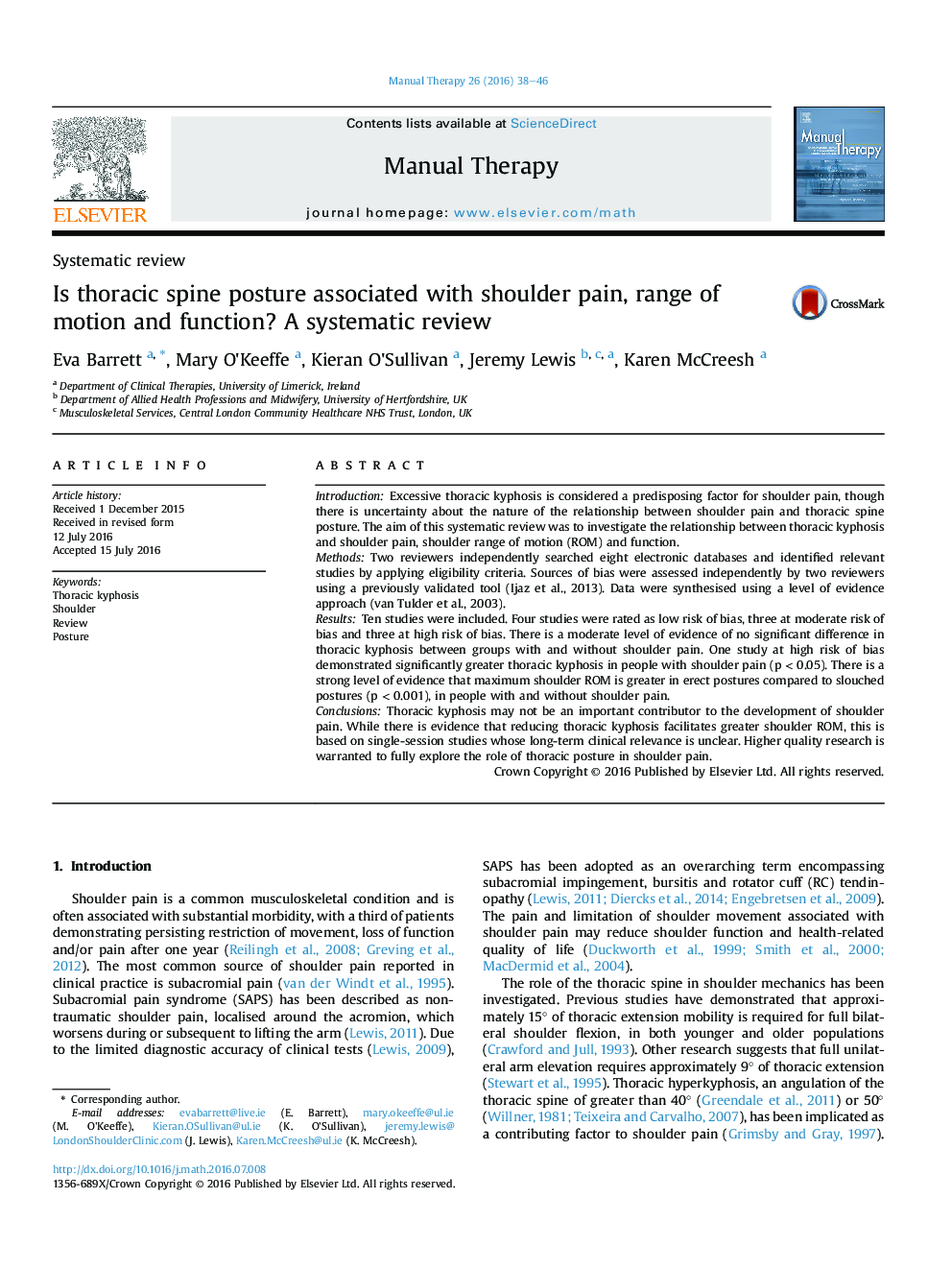| Article ID | Journal | Published Year | Pages | File Type |
|---|---|---|---|---|
| 2624779 | Manual Therapy | 2016 | 9 Pages |
•Resting thoracic kyphosis is very similar in people with and without shoulder pain.•Increased thoracic kyphosis may not be a key contributor to shoulder pain.•Greater shoulder range of movement may be obtained in an erect thoracic posture.•The influence of thoracic mobility on shoulder pain requires further investigation.
IntroductionExcessive thoracic kyphosis is considered a predisposing factor for shoulder pain, though there is uncertainty about the nature of the relationship between shoulder pain and thoracic spine posture. The aim of this systematic review was to investigate the relationship between thoracic kyphosis and shoulder pain, shoulder range of motion (ROM) and function.MethodsTwo reviewers independently searched eight electronic databases and identified relevant studies by applying eligibility criteria. Sources of bias were assessed independently by two reviewers using a previously validated tool (Ijaz et al., 2013). Data were synthesised using a level of evidence approach (van Tulder et al., 2003).ResultsTen studies were included. Four studies were rated as low risk of bias, three at moderate risk of bias and three at high risk of bias. There is a moderate level of evidence of no significant difference in thoracic kyphosis between groups with and without shoulder pain. One study at high risk of bias demonstrated significantly greater thoracic kyphosis in people with shoulder pain (p < 0.05). There is a strong level of evidence that maximum shoulder ROM is greater in erect postures compared to slouched postures (p < 0.001), in people with and without shoulder pain.ConclusionsThoracic kyphosis may not be an important contributor to the development of shoulder pain. While there is evidence that reducing thoracic kyphosis facilitates greater shoulder ROM, this is based on single-session studies whose long-term clinical relevance is unclear. Higher quality research is warranted to fully explore the role of thoracic posture in shoulder pain.
